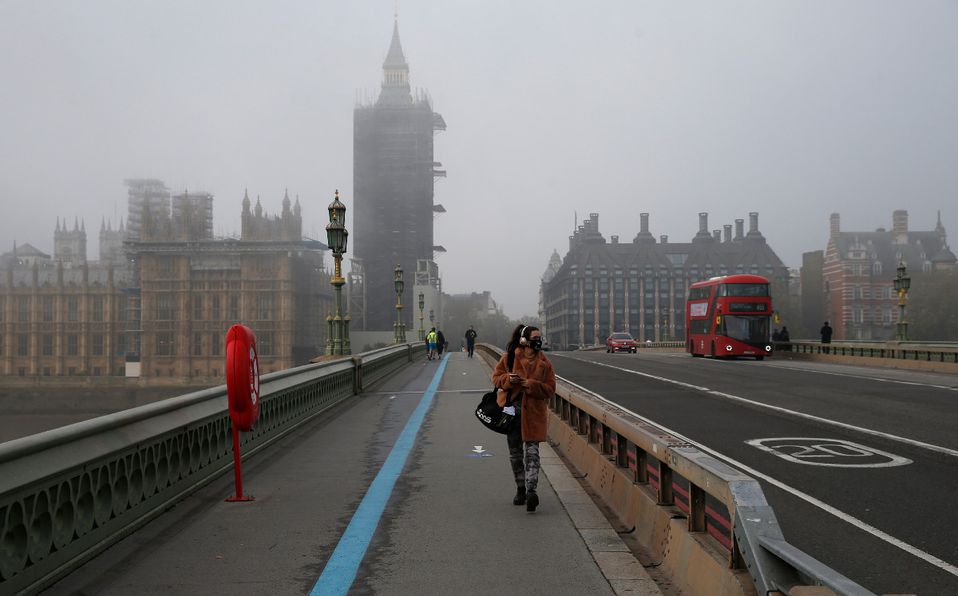11:00 p.m., December 19, 2020
A professor at the Institut Pasteur and at the Cnam, member of the scientific council, epidemiologist Arnaud Fontanet coordinated a pilot study to shed light in particular on the places and circumstances of contamination. Called ComCor, it was carried out in October-November, during curfew and then confinement, by e-mail to some 3,400 volunteers infected with Sars ‑ CoV ‑ 2 and 1,700 others who were not infected and served as a control panel.
Read also – Covid-19: the situation is deteriorating in France, one week before Christmas
What is the main lesson from your ComCor study on the behaviors and practices associated with infection?
The most important result is that almost half of those infected [44%] know whoever transmitted the virus to them. And most of them know that they have engaged in risky behavior – not wearing a mask or disregarding them, etc. When the person at the origin of the contamination can be identified, in 35% of cases it is a member of the family living under the same roof, the spouse in general. The study also confirms that family and friends gatherings play a major role in transmission, especially meals. All the moments during which we take off the mask to eat, we talk a lot and loudly, are concerned: ordinary lunches or dinners (45% of cases), birthday parties or jars (11.7%), wedding ceremonies, funerals , baptism (2.6%). According to our data, the last contact between the infected person and the one suspected of being the source of the contagion lasted more than fifteen minutes [54% des cas] ; neither of them generally wore a mask; and the contact took place inside, windows closed [79,8%].
In the office, is the most frequent contamination scenario the same?
In the workplace, sharing an office with colleagues increases the risk of course, but the canteen is also a high risk place.
“
it is imperative to prevent the risks associated with Christmas meals
“
Restaurant owners accuse your study of being biased. How do you react?
Like any scientific study, this one has limitations, which we have carefully listed. But, unsurprisingly, his results converge with those published in the CDC journal. [Centres américains pour le contrôle et la prévention des maladies] on a number of cases ten times less and with those of the large study published in Nature using data from mobile phones. I understand that, for restaurateurs and bar owners, this is terrible to hear. Like going to a gym, eating indoors is a risky time. Professionals are not responsible for it, it is obvious.
So how can you safely celebrate Christmas? By fasting ?!
The other day on BFMTV, Bruce Toussaint asked me if Christmas should be canceled. We all need it; some crack psychically, it must be taken into account. But it will necessarily pay off, because this virus is vicious; it is therefore imperative to prevent the risks associated with these meals. It can’t be a Christmas like any other! To limit transmission, you must follow a few simple principles: not to be too numerous; do not huddle together; ask those with symptoms to stay at home; suggest that frail people eat at a separate table and wear their mask as much as possible; put it back on the face just after the last bite; insist on hand hygiene and surface cleaning; ventilate!
Your study shows that the French do not isolate themselves well. It’s worrying?
The vast majority [97,3 %] of those who answered the questionnaire isolated themselves in one way or another, but they often did so insufficiently and too late. Only half reacted at the first symptoms, that is to say at the peak of contagiousness. And only half have isolated themselves from their immediate surroundings, within the home. The prevention message did not get across well.
“
While it had declined significantly in November, the number of hospital admissions has stagnated at 1,500 per day for three weeks
“
Does your study still bring some good news?
Of course! Teleworking protects: it reduces the risk of being infected by 30%. And public transport is not apparent sources of contamination, as shown in the second part of our study, which compares the behavior of people who responded to us with those of a control group composed by the Ipsos polling institute. It requires confirmation, but it seems to mean that, even being tight in the metro or in the bus, the mask protects us; and it is perhaps also because we do not speak in public transport.
Why do you intend to redo this work on the circumstances of contamination?
These results are valid for a very particular period, that of curfew and confinement, during which our study began. The places and circumstances of contamination are likely to change and the study will serve as a basis for a long-lasting monitoring tool. If we reopen public places, for example, it will be possible, by analyzing new questionnaires, to see if this has had an impact on the number of contaminations. It can help us take calculated risks.
The health agency Public Health France diagnosed Friday a “worrying” epidemic “recovery”. Do you share these fears?
The number of people infected by a case increases a little since the famous R is around 1. But for me, the main indicator to follow is that of hospital admissions, because it is not deceptive. While it had greatly decreased in November, it has stagnated at 1,500 admissions per day for three weeks. On the eve of the holidays, that high plateau does not say anything good. Because of the delay between contamination and possible hospitalization, the assessment of this high-risk period cannot be drawn before mid-January. We’re a little stuck for at least a month!
“
The first three months of 2021 will be painful because winter will be in full swing without being able to feel the expected benefits of vaccination
“
Will we be really deconfined before summer? The deadline is only going backwards!
The current “stop and go” is difficult, from an economic and emotional point of view; the continued pressure of the virus on the healthcare system is too intense. The first three months of 2021 will be painful because winter will be in full swing without being able to feel, at the collective level, the expected benefits of vaccination. Life will have to stay different. But when vulnerable people, a third of the population, have been vaccinated in large numbers, probably at the end of the first half of the year, the pressure should ease.
Do you have concerns about vaccines?
Even though everything has been carefully planned, I hope production and distribution will not be a problem. The demand is very strong at the world level; the slightest grain of sand can have repercussions. The other major issue for 2021 will be the vaccination of the remaining two-thirds of the population: many doubt its interest. At that point – rather favorable, because we will have perspective on the undesirable effects – we will have to convince young people that, for them too, the individual benefit outweighs the risk. A 20-year-old adult who catches the Covid can end up hospitalized in 1 in 200 cases; it is much more than with the vaccine. The long Covid and its after-effects, including loss of smell, are not trivial. A broad immunization of the population thanks to the vaccine promises them a collective benefit: to return to the life before, to find their friends at the university or during the parties, to find a job. There are also benefits for those close to them: preventing their parents from losing their job due to a very long-lasting economic crisis; protect their grandparents. At least half of the population will need to be immunized for the epidemic to stop. Given the effectiveness of the products that arrive, that assumes that 70% of us are vaccinated.
You were the first to talk about the potential serious side effects of vaccines; why did you do it?
Transparency must be the most total. It’s good that we talked about the allergic English caregivers and the case in Alaska, it proves that the pharmacovigilance system works. There will be serious side effects, but for vaccines it is usually around 1 in 100,000, and it can vary from vaccine to vaccine. But we must not forget that it is first and foremost the virus that kills.
“
While everyone is on the lookout for biomedical innovation, it is the archaic methods that have so far rendered us the greatest service!
“
Olivier Véran explained Thursday to C to you that a cross-analysis of air temperature and humidity could predict the evolution of the epidemic. It is true?
Despite their proximity to China, countries such as Thailand, Cambodia and Laos have been spared. Beyond the effectiveness of the measures taken there, did certain climatic factors play a role? An article published in the journal Jama Network Open showed that, during the first wave, the virus circulated on an isotherm ranging from 5 to 11 ° C on a band that connects Wuhan, the cradle of the epidemic, to Korea, where it has been very well managed, but also to Iran, northern Italy and France, where it has wreaked havoc. Likewise, the countries most affected during the southern winter in the southern hemisphere have common characteristics. Researchers have developed a model suggesting that the risk of viral circulation is greatest when the temperature varies from 3 to 17 ° C and the relative humidity of the air is medium. These calculations are interesting in theory, but it will be necessary to verify that they can predict the future.
Why is Germany struggling today?
While the first wave overwhelmed Italy or France, Germany had time to prepare. This fall it set the constraints slider high to preserve the economy but not high enough, and it had to increase the level of restrictions further. It reminds us that in order to hope to control the situation, you have to strike early and hard, and also that this crisis is difficult to manage.
While tests or treatments are not the ultimate anti-Covid weapon and while waiting for the vaccine, we only really have barrier gestures left?
This epidemic projects us both into the future and into the past: we have achieved the double feat of sequencing the virus in less than three weeks and of manufacturing innovative vaccines in one year using messenger RNA; at the same time, quarantine measures or centuries-old epidemiological home surveys are used. While everyone is on the lookout for biomedical innovation, it is the archaic methods that have so far rendered us the greatest service!
–


